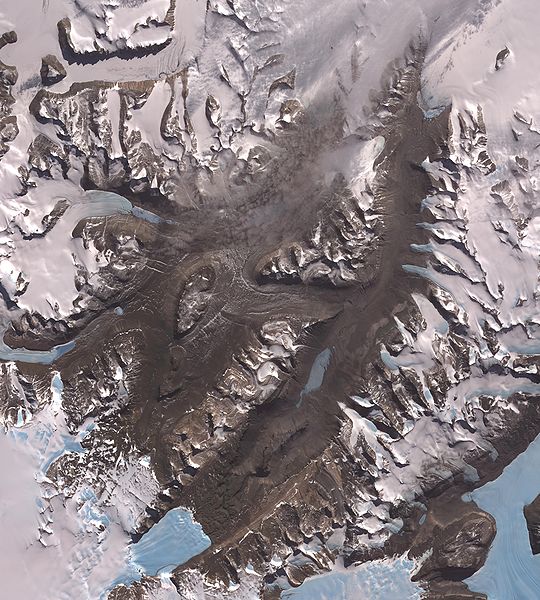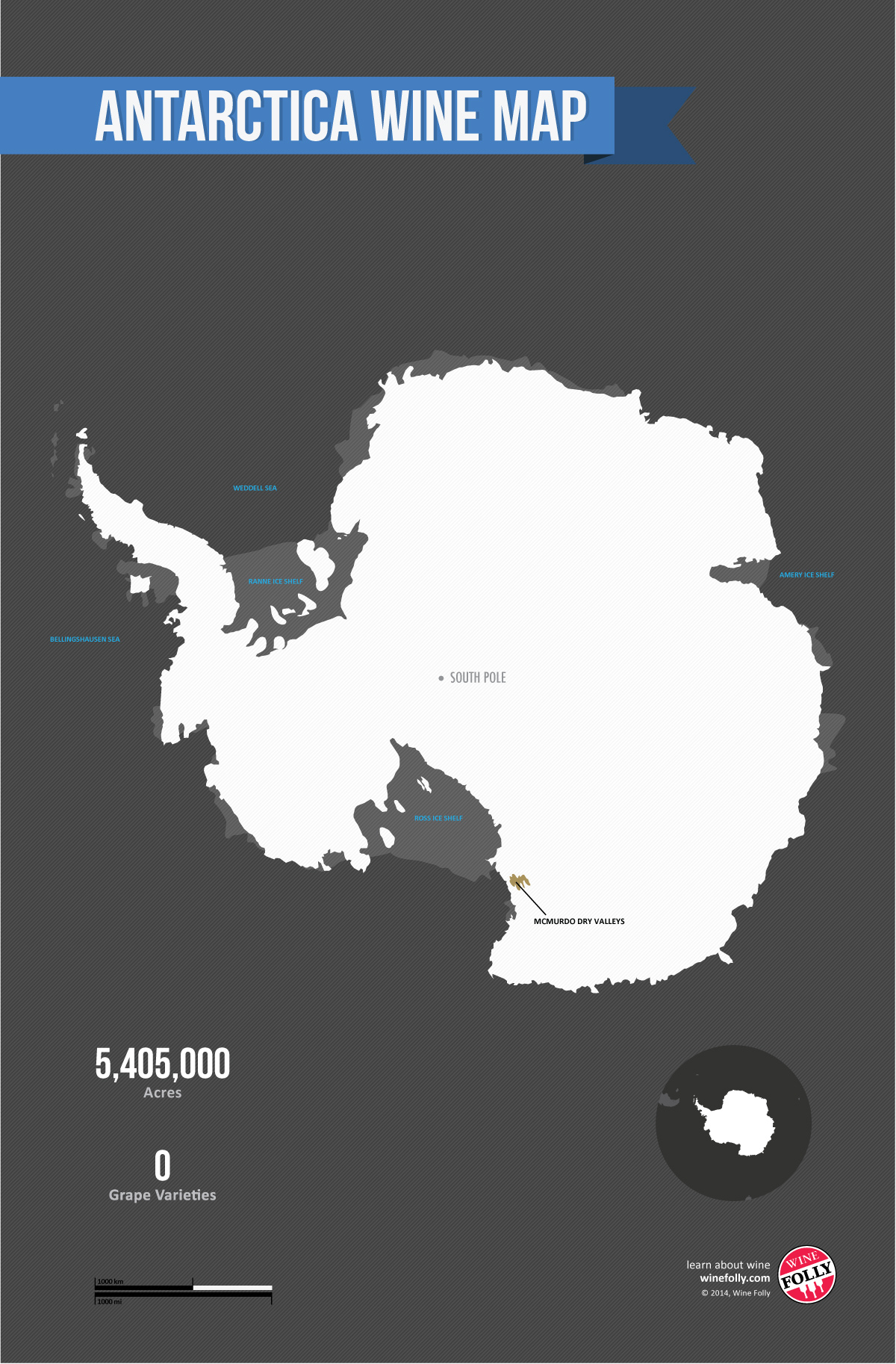With global warming heating up wine regions around the world, some southern countries, including Argentina and New Zealand, are annexing Antarctica’s vast potential as an ice wine region.
Find out everything you need to know about Antarctica ice wine.
At the moment, there is just one stalwart producer working alongside penguins in the Dry Valleys of Antarctica. James Pope is focusing on cool climate varieties, including Riesling, and much lessor known but better performing Vidal and Seyval Blanc.

Salty “Soils”
The soils (if you can call them that) of Antarctica have high salt content from the ocean water and, thus, lean towards the neutral or basic side (on the pH scale). Since there is little organic matter holding the soils together, walking around Antarctica is more like walking in the sand on the beach.
The best places for growing wine in Antartica are the McMurdo Dry Valleys. The high pH (basic) soils tell us that the wines have high acidity. Salt content in the soil also adds a distinct saline note to the wines. Since all of the Pope Wine lines are ice wines, you’ll find them to have salty-sweet flavors of lemon, honey, sardine and a subtle volcanic aroma in the aftertaste. In short, they are haunting.
Another interesting fact about the soils of Antarctica is that for most of the year they are in permafrost. However, during the summer months, the frost melts revealing a foot or so deep of free-moving soils. The vineyards have adapted to this extremely shallow soil by sending their roots laterally. The vines must be placed at least 60 ft apart to obtain proper nutrients.
Penguins in the Vineyards
Speaking of nutrients, since organic matter is incredibly low, there have been some creative solutions to keep vines alive. A symbiosis has been happening with the vines and local wildlife. A few Adelie penguin flocks have taken up rookeries in the vineyards; their droppings providing nutrients to low budding vines. This is crucial as grapes ripen in the summer time (during January down under!).
Tasting Room at Shackleton’s Hut
If you plan to visit, definitely check out James Pope Wines at historic Shackleton’s Hut. This 1908 architectural gem is a great place to taste wines and enjoy views of wildlife in Antarctica.
